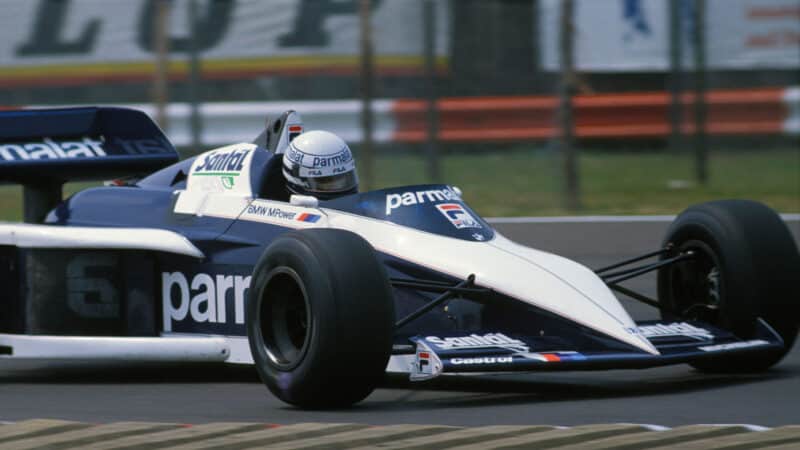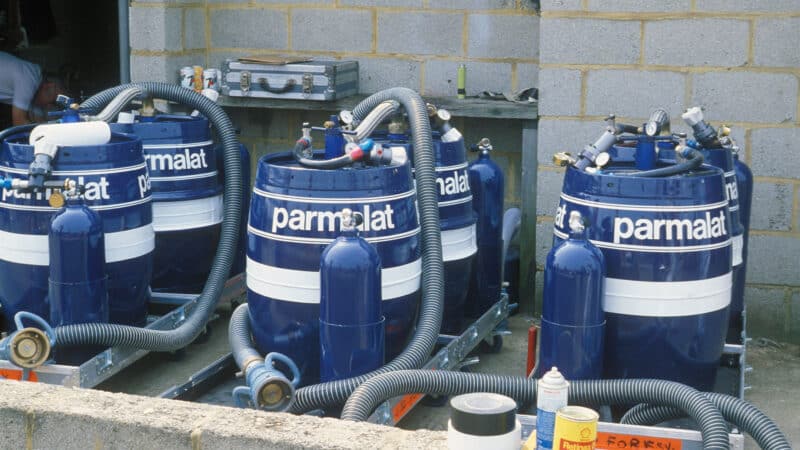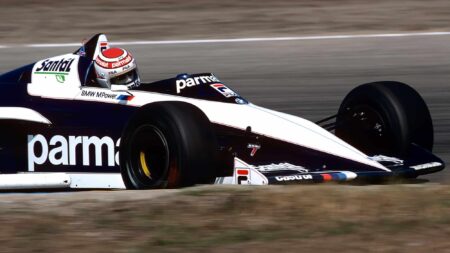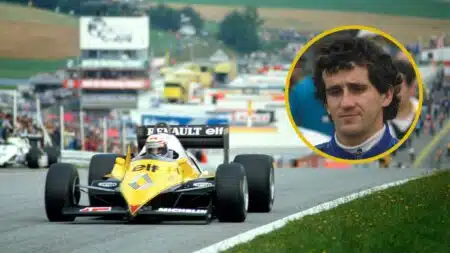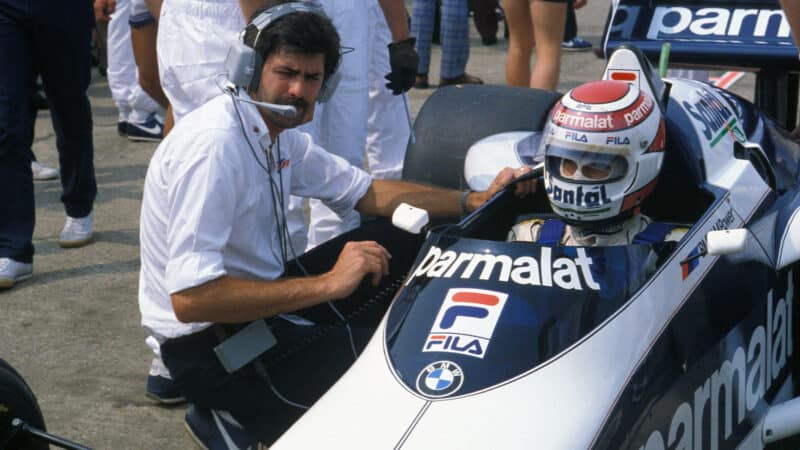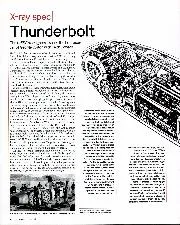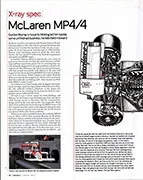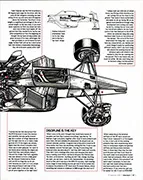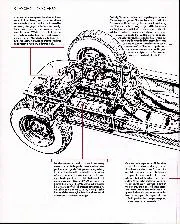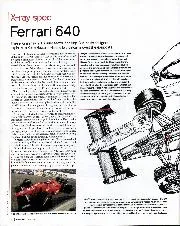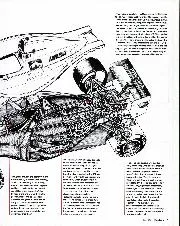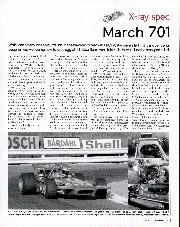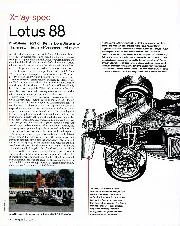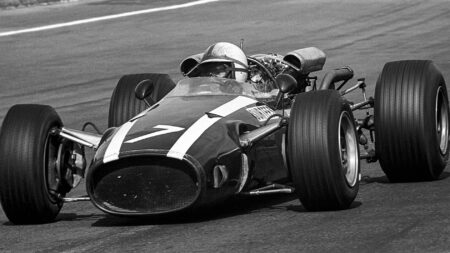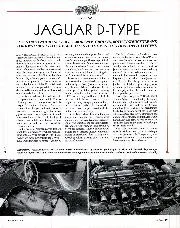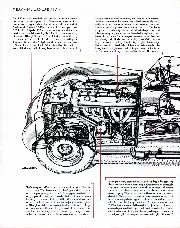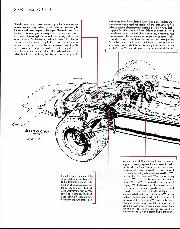Eventually we were running 4 or 5 bar in the barrel and could get in 33 gallons in three seconds. But it was bloody dangerous. We had to work out how to stop the fuel guy putting the hose on before the guy on the other side had fitted the breather, otherwise you could blow it to smithereens. We tried all sorts of mechanical interlocks, none of which was really safe, so we decided that, because their faces ended up a few inches apart, we’d just use eye contact. I told the guy on the breather not to look up until he was coupled. As soon as the other guy saw the whites of his eyes, he coupled the fuel.”
A simple F1 approach
“To make the car simple to rebuild, I designed a front module mounted on studs to the tub. It was a one-piece magnesium casting that took all the point loads apart from the rear lower leg – the brake-reaction arm – which went back to the dashboard area. You could build the front suspension, set it up off the car and replace it as a unit. There was no steering-rack housing: that was machined into the casting to save weight, something I copied on the McLaren F1 road car. The spring/damper units were held in place by a pin at the bottom, so you just had to flick back the rocker, remove the pin and pull the unit out. You could change front springs in about three minutes, and the rears were quick to change too.”
Removable rear-end

Brabham engine and rear end came as a removable module
Grand Prix Photo
“I Invented the race rear end with the 52, which a year later everybody copied. To make the car simple to work on, the engine, transmission and rear suspension were built up as a module off the car. I decided that we’d make it so self-contained that all the liquids were in there as well, something we backed away from in later years. This meant we could set up the rear suspension off the car in the workshop, and actually run the engine to go through the gears and check the clutch. So we had completely-tested race rear ends intercoolers, radiators, everything waiting to be mounted to the back of the tub. This meant our guys were finishing at six o’clock in the evening at the races, which really pissed off everybody else who was still hard at work! The 52 was basically a front-end module, a rear-end module and the tub in the middle.”
Coming up for air
“The engine used a cast-iron truck turbo and there was massive heat soak into its bearings when the car was stationary. We found that if we stopped for more than about 10sec the bearing would seize. As we had air jacks I took a bleed off the air line to a device called an air ejector which blew on to the bearing housing. As soon as you plugged in the air line for the jacks you got massive airflow over the bearing housing: problem solved.”
Carbon copy
“We had a two-year jump on John Barnard using carbon composite and grew the amount of it we used every year. In the 52 the tub was about 60 per cent carbon, 40 aluminium.

